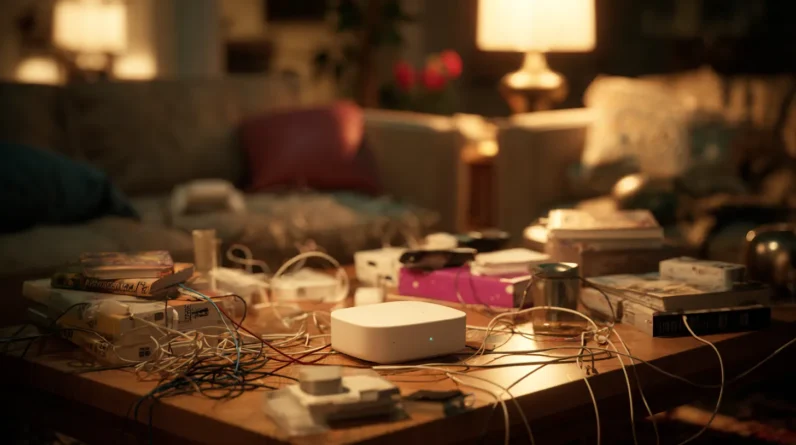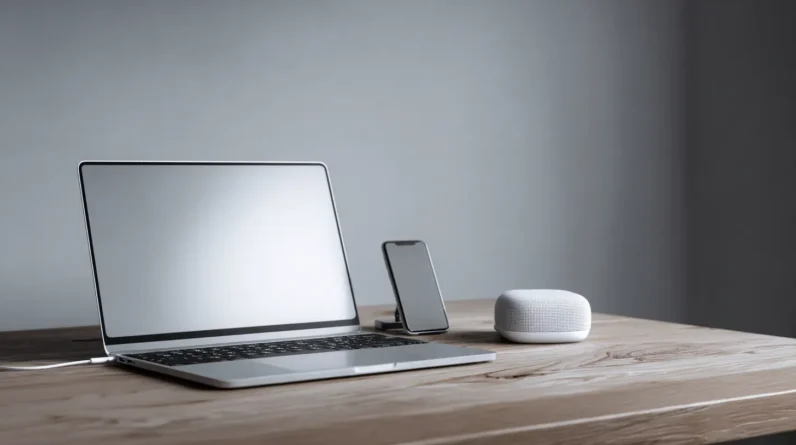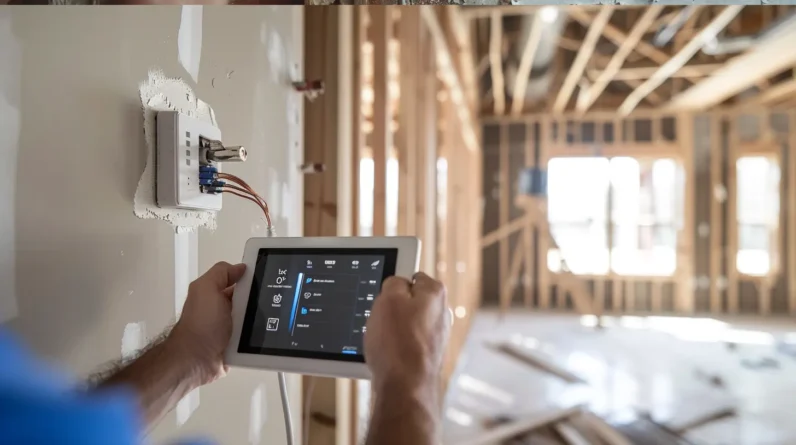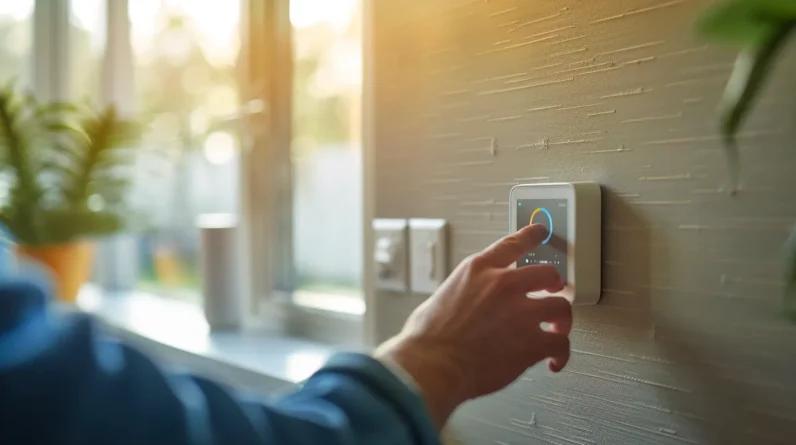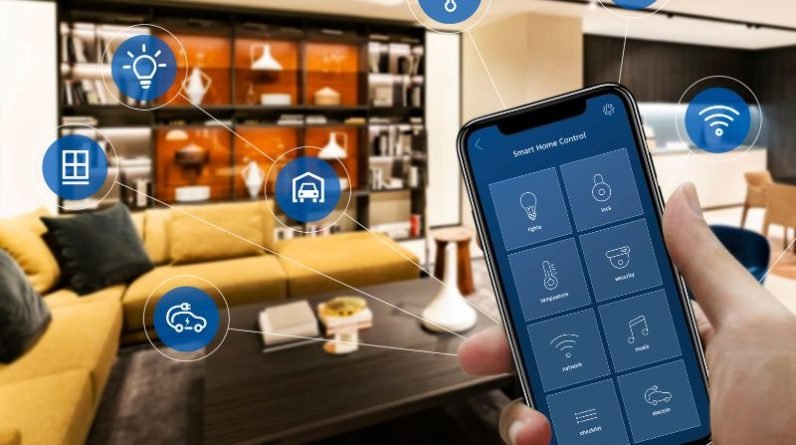
Form follows function.’ This timeless adage, often attributed to the pioneering architect Louis Sullivan, encapsulates the essence of designing smart homes where functionality seamlessly merges with aesthetics.
In this article, we delve into the art of crafting intelligently designed living spaces that not only maximize efficiency and utilize space effectively but also seamlessly integrate cutting-edge technology with impeccable design principles.
By customizing smart features to suit individual lifestyles, enhancing comfort, and optimizing energy efficiency, these homes offer a harmonious blend of convenience and elegance for those seeking freedom in their living environments.
Key Takeaways
– Seamless integration combines functionality and aesthetic appeal in smart home design.
– Maximizing space and efficiency through built-in storage units and multi-functional furniture.
– Harmonizing technology and design by incorporating smart systems and minimalist aesthetics.
– Customizing smart features to fit individual lifestyle needs, enhancing comfort and energy efficiency.
The Importance of Seamless Integration
Seamless integration plays a pivotal role in smart home design by ensuring the effective combination of functionality and aesthetic appeal.
The concept of seamless automation involves the seamless integration of various devices and systems within a smart home environment, enabling them to work together harmoniously. This integration allows for the automation and control of different aspects such as lighting, heating, security, entertainment, and more.
Aesthetic integration refers to the process of seamlessly incorporating technology into the overall design scheme of a smart home without compromising its visual appeal. This involves carefully selecting devices that blend seamlessly with the existing aesthetics, whether it be through concealed installation or design elements that complement the overall style of the space.
Maximizing Space and Efficiency
Efficient utilization of space is a crucial factor in the design of smart homes. With limited square footage, it becomes imperative to find innovative ways to maximize space and optimize performance. Space saving solutions not only enhance functionality but also create an aesthetically pleasing environment that promotes freedom of movement.
To achieve this, designers are implementing various strategies such as:
Built-in storage units: These provide ample space for organizing belongings, reducing clutter, and making rooms appear more spacious.
Multi-functional furniture: Convertible sofas, collapsible tables, and modular shelving systems allow homeowners to adapt their living spaces based on their needs.
Smart appliances: Compact yet powerful devices eliminate the need for multiple gadgets while minimizing energy consumption.
Harmonizing Technology and Design
The integration of technology and design in contemporary residential spaces is a key aspect that requires careful consideration and strategic planning. Technology-driven architecture, combined with minimalist design principles, has the potential to create harmonious living environments that seamlessly blend functionality and aesthetics.
In technology-driven architecture, the focus is on incorporating smart systems and innovative solutions to enhance the overall experience of living spaces. This includes automated lighting systems, integrated sound systems, energy-efficient appliances, and remote-controlled security features. Such technologies not only provide convenience but also contribute to sustainability efforts.
Minimalist design complements technology-driven architecture by emphasizing simplicity, clean lines, and uncluttered spaces. This aesthetic approach creates a sense of calmness and promotes mindfulness within the home environment. By eliminating excess ornamentation and unnecessary elements, minimalist design allows the focus to be placed on the functionality of the space while maintaining an elegant appearance.
When integrating technology into minimalist design, it is crucial to strike a balance between functionality and visual harmony. The placement of devices should be carefully considered so as not to disrupt the overall aesthetic flow of the space. Concealing wires or utilizing wireless technologies can help maintain a clean look.
Customizing Smart Features to Fit Your Lifestyle
Customizing smart features to accommodate individual lifestyles involves tailoring technological solutions to meet specific needs and preferences, allowing homeowners to personalize their living spaces according to their unique requirements. By designing personalized features and integrating automation, individuals can create a home environment that is not only aesthetically pleasing but also highly functional.
Here are three key ways in which customizing smart features can enhance the overall living experience:
Personalized lighting control: With advanced lighting systems, homeowners have the freedom to adjust the brightness and color of lights based on their mood or activity.
Smart climate control: Integrating automation allows for customized temperature settings in different rooms, ensuring optimal comfort throughout the day.
Intelligent security systems: By incorporating personalized security features such as facial recognition technology or voice-controlled access, homeowners can tailor their home’s security system to meet their specific needs.
Through these customizable smart features, individuals can truly transform their living spaces into personalized havens that cater to their lifestyle preferences.
Enhancing Comfort and Energy Efficiency
Enhancing comfort and energy efficiency in residential spaces can be achieved through the integration of tailored smart features designed to optimize thermal insulation and control air circulation. By improving sustainability and optimizing user experience, these smart features not only create a more comfortable living environment but also contribute to energy savings and reduced environmental impact.
One way to enhance comfort and energy efficiency is by implementing smart thermostats that can adjust temperature settings based on occupancy patterns, weather conditions, and personal preferences. These thermostats allow for precise control over indoor climate, ensuring optimal comfort while minimizing energy consumption.
Another important aspect is the use of smart blinds or curtains that can automatically adjust their position based on sunlight intensity. This helps in regulating natural light levels, reducing heat gain during hot summer days, and providing privacy when needed.
Integrating smart ventilation systems with sensors that monitor indoor air quality can improve airflow management while maintaining a healthy living environment. These systems can detect pollutants such as carbon dioxide or volatile organic compounds (VOCs) and adjust ventilation rates accordingly.
Frequently Asked Questions (FAQs)
How Much Does It Typically Cost to Implement Smart Home Technology Throughout an Entire House?
Cost implications and installation challenges are important considerations in implementing smart home technology throughout an entire house. The cost varies depending on factors such as the size of the house, the desired level of automation, and the complexity of the installation process.
Are There Any Limitations or Compatibility Issues When Integrating Different Smart Home Devices From Various Manufacturers?
The integration of smart home devices from various manufacturers may present challenges due to limitations and compatibility issues. These factors can impact the seamless operation and interconnectedness of the devices, requiring careful consideration during the design process.
Are There Any Specific Design Considerations to Keep in Mind When Incorporating Smart Home Technology Into an Older or Historic Home?
When incorporating smart home technology into an older or historic home, design considerations and retrofitting challenges must be taken into account. Factors such as preserving the architectural integrity, integrating modern conveniences while maintaining aesthetics, and addressing compatibility issues should be carefully considered.
What Are Some Common Security Concerns or Vulnerabilities Associated With Smart Home Systems, and How Can They Be Addressed?
Smart home security is a crucial aspect of designing smart homes. Common vulnerabilities include weak passwords and outdated software. Addressing these concerns involves implementing strong authentication measures, regular software updates, and network segmentation to isolate devices.
How Can Smart Home Technology Be Used to Enhance Accessibility and Accommodate Individuals With Disabilities or Special Needs?
Assistive technology integration and voice control solutions can enhance accessibility and accommodate individuals with disabilities or special needs in smart homes. These technologies provide convenient and intuitive ways for users to interact with their environment, promoting independence and improving quality of life.
Conclusion
In the realm of smart home design, the fusion of functionality and aesthetics is a delicate dance. The seamless integration of technology into our living spaces is paramount to creating a truly harmonious environment. By maximizing space and efficiency, we can optimize both our daily routines and the overall functionality of our homes.
It is essential to strike a balance between technological advancements and design elements that complement our personal style. Just as an artist skillfully combines colors on a canvas, so too must we customize smart features to fit our unique lifestyles. In doing so, we can enhance not only our comfort but also the energy efficiency of our homes.
Like a symphony conductor orchestrating each instrument, designing smart homes requires meticulous attention to detail and expert knowledge in various fields. As we navigate this ever-evolving landscape, let us embrace the artistry that lies within these innovative spaces – where technology seamlessly blends with design to create remarkable dwellings that captivate both the eye and soul.


